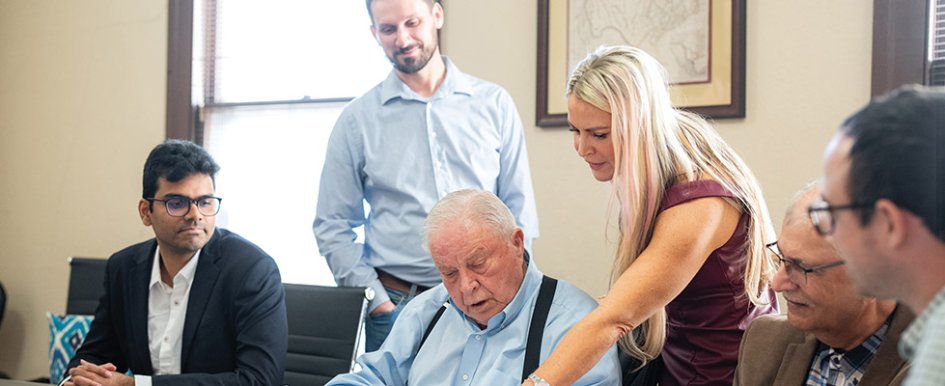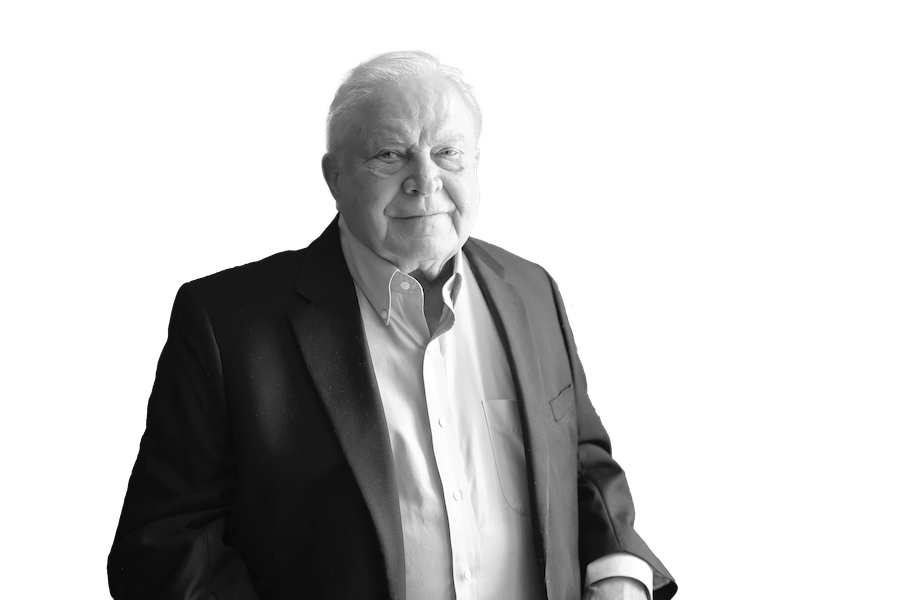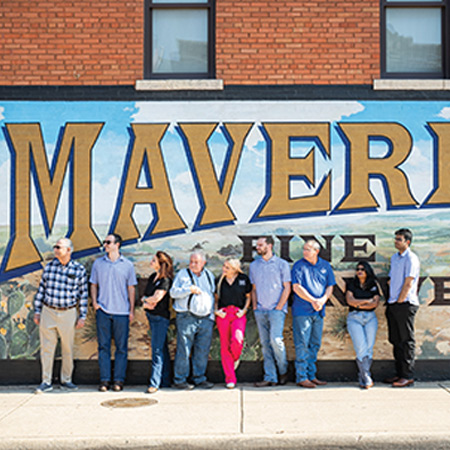
 In 1979, McDonald’s launched its first Happy Meal, the Sony Walkman arrived on the music scene and CompuServe introduced a dial-up service for consumers — a precursor to today’s online world. During this time of creativity and innovation, Keith Kothmann founded Construction Cost Management (CCM) in Fort Worth, Texas. CCM has provided construction estimating and consulting services for the last four decades. Below, Kothmann reflects on building his company and staying successful in the construction industry for more than 45 years.
In 1979, McDonald’s launched its first Happy Meal, the Sony Walkman arrived on the music scene and CompuServe introduced a dial-up service for consumers — a precursor to today’s online world. During this time of creativity and innovation, Keith Kothmann founded Construction Cost Management (CCM) in Fort Worth, Texas. CCM has provided construction estimating and consulting services for the last four decades. Below, Kothmann reflects on building his company and staying successful in the construction industry for more than 45 years.
What drew you to construction? Why did you decide to open an estimating firm?
My first job wasn’t in construction cost estimating — I was a soda jerk at a drugstore, and I loved it because I got free
soda and ice cream. My second job wasn’t in construction either. But just a few months into my third job, where I worked with general contractors (GCs) to develop the estimates they would pass on to their clients in the bid phase, I had completed estimates for well over 200 construction projects. I used that experience to become a vice president at Estimating ORR, which was a leading international firm at the time. My job was to crisscross the U.S., teaching people to use their computerized estimating system, which was the only one of its kind. Estimating ORR was acquired by a French firm for its proprietary software, so at age 33, I had a choice: move to France, or stay in Texas and start my own company. I didn’t really want to exchange my cowboy hat for a beret, so in 1978, Construction Cost Management was born, and it’s been in Fort Worth ever since.
One of the first things I did was buy a mainframe from IBM. It was a huge financial risk, but looking back, CCM would probably not have become an industry leader. During this era, only organizations like NASA or the Department of Defense wrote their own code, but since I didn’t have to learn French, I mastered several computer languages and created my own software. Forty-five years later, I’m still doing what I love, and am still learning new things every day.
You founded CCM in 1979. How have you noticed the industry changing over the last 45 years?
When I started the business, most architecture and engineering (A&E) firms didn’t use professional estimators; instead, they simply tallied up the estimates their subcontractors gave them. The estimates the subs gave were free, so I’m only partly joking when I say that they got what they paid for. Kidding aside, clients weren’t used to paying for professional cost estimating, so we had to make them see that “if you estimate it, it gets managed.” During this time period, all tax-supported projects were required to provide estimates that substantiated the owner’s budget. For projects that bid substantially over (or under) the owner’s budget, the AE would be contractually obligated to redesign the project to meet the budget. Redesigning was a real train wreck in terms of AE fees.
One thing that has really changed is the pace of business. Forty-five years ago, it was really, really, really slow. Using a hand-cranked calculator was time-consuming, but much better than longhand. The government’s giant mainframes, which were state-of-the-art at the time, improved the pace, but not by much. This was because takeoff data had to be coded before it was input, and if it was a government project, it had to be sent to a data center in Maryland. Response time to every inquiry was often 24 hours, so the real-time dialogue that we take for granted today was impossible, even with the most sophisticated players. In the 1970s and 1980s, estimators would extrapolate scope of work and materials needs from the hard copy plans they received from A&Es, then input that data into the mainframe using a system called CACES. That system was replaced with the Micro-Computer Automated Estimating System, or MCACES. The most important development in the industry is the speed at which we work. Today, all design data and estimate submittals are digital.

What industry changes would you like to see?
Actually, I don’t see much change in the estimating industry, and I don’t think artificial intelligence (AI) is going to have an impact. There’s just too much human interpretation involved with determining a scope of work that can be priced.
How has CCM aligned itself with sustainable construction over the years?
Since we’re not the ones who design the projects, we can’t really control the types of materials used, but we do have some impact on how a build will manifest on the ground. We do this by being aware of environmental impact and by making sure our estimates accommodate environmental concerns. For example, we’re still producing estimates for a massive project in the Grand Canyon. Because of the environmentally and culturally sensitive nature of the Colorado riverbed, all men and some material had to be hauled down the canyon in a two-hour (each way!) mule ride. All of this was built into the estimate to protect the environment — except, of course, estimating the cost of hauling up the mule droppings, which thankfully were considered “natural” to the area. We’ve built this type of thinking into our estimates and continue to be sensitive to these things wherever we work.
What is your greatest career achievement, and why?
I think my greatest career achievement is still being here, doing what I love, 45 years after I started the firm! It’s not easy to have to work in the business while you also work on the business, especially in a field where every development in technology — from the way things can now be automated, to improvements in materials, to the speed of communication — can impact a cost estimate.
What’s the most memorable project you’ve worked on?
In nearly 50 years, I’ve led quite a few remarkable projects, but a few really stand out. One was when CCM was tasked with estimating a runway in a remote Pacific Ocean island that had no infrastructure — not even fresh water. It was really just a speck of land in a vast blue ocean, with no port or even a deep-water lagoon. That meant our estimates had to include bringing in all the men and materials on a mother ship, then transferring everything to small boats each day. If the seas were rough enough to prevent the small boats from landing or getting back to the ship, a day’s work would be lost, and we had to build those kinds of variables into our estimates.
Another project was the Elwha River relocation in a national park, including river tunnels, two water treatment plants, extensive electrical facilities and something called a fish trap, which sounds simple but is extraordinarily complicated. This was a vast and incredibly complex project, but the estimate was right on the button, and gave a huge credibility boost to the estimating industry in general and to CCM specifically. The Grand Canyon project that I mentioned previously is still ongoing, but it is certainly one of the more memorable ones because of the complexity, and because it’s such an honor to be working on a project that will help preserve one of the most beautiful spots on the planet.
What’s the biggest lesson you have learned?
Gosh, there are so many, but one of the most important is that if you want to be successful in this industry — and probably in life in general — you really need to be broadly curious. When your purview is every trade and every facet of the build — including things that can’t be controlled but have to be accounted for, like weather and tides — it’s critical to be interested in basically everything. These days, fluency in computer languages is a must, but so is the temperament to handle the bureaucracy that is inherent in the kind of estimating projects we tackle, many of which are related to the military or other U.S. government agencies. Another thing I’ve learned is that because any project built with tax dollars literally takes an act of Congress to greenlight, budgets are my reality. Much as I would like to wish it were not so, I have learned to accept it: There’s no avoiding the budgets in the construction estimating business.
Tell me about some career highs and lows you’ve experienced.
This might not be what you were expecting, but it’s what immediately comes to mind when you say the words “career high” for me. About 10 years ago, I sold CCM to my daughter (Katy Abraham) so that I could be free to focus on doing the estimating, instead of also having to spend so much time growing and managing the business. Honestly, if I had known how much fun it was to just be an estimator instead of also being a business owner, I would have sold it to her 10 years earlier — I love being an employee! Right now, I lead a team of eight seasoned estimators and I’m having fun training a few hand-picked young engineers. While I know the idea is to pass on my knowledge and eventually step down from active duty, I still love it when I hear someone down the hall say, “Let’s ask Keith,” because nine times out of 10 I’ve encountered the same situation or something really similar. But my daughter Katy is doing a fantastic job managing the company. She’s got a plan and it’s working, so I’ll keep coming to the office for as long as I’m adding value — or for as long as the “boss” will let me!
What is the culture like at CCM? How did you help cultivate a workplace that has healthy teams?
Each estimating product that we develop is a team effort. No one is left to produce an estimate independently. I think that sharing roles and questions on an estimate with all team members is key to cultivating a camaraderie that is really successful.
Do you have any advice for our readers in similar roles?
I think one of the key things to remember is that construction cost estimating has two inherent — and often dueling — challenges. The first, of course, is to provide an accurate depiction of the labor and materials costs of a build. The second is to provide those estimates in a way that can be fully understood by several audiences. Even though they’re all lumped in the “construction” category, contractors speak a different language than engineers or designers; owners often need extra scope description as they are often not well versed in construction lingo; and, of course, banks need to understand our estimates so they can use them to determine loan requirements. And since we aren’t getting paid to write an estimate twice, we have to make sure it can be broadly understood. Making sure your team understands that will save a lot of time, money and headache down the road.
What would you say to someone considering a career in the construction industry?
I will encourage anyone to enter the construction industry because as long as there are people on the planet, structures will be built. There are so many ways to be successful in construction: You can be a creative type who does design, a person who researches new and better materials, all the different types of engineers and, of course, the tradespeople who are the true backbone of the industry. There’s always a need for skilled businesspeople to hold it all together, and computer scientists have their hands in everything now. If someone is interested in cost estimating specifically, I would tell them that estimating for prime contractors is very, very different from what we do. Some estimators use data that they receive, then aggregate the numbers that roll in from subcontractors, and maybe add a thing here and there. We build our estimate from the bottom up, line-by-line, to provide a fully comprehensive package. I like to say that our job starts with an idea drawn out on a napkin … and includes the price to demo it 50 or 75 years later.
Given your career path and experience, what is your perspective of the future of the industry?
AI gets lots of airtime these days, and for good reason: It’s amazing. That said, there are real limits to what AI can do in our industry. Being an estimator is not just about crunching numbers and creating documents: It’s about understanding the total project. I like to tell young estimators that they need to develop 3D vision so they can mentally build a project in their mind. One of our estimators actually tried an interesting experiment where he loaded parameters into an AI portal to build an elevator in a school. The AI did nicely on some of the line items but missed huge chunks of what it would actually cost to install, including things unrelated to materials or machinery, like extra building security and increased air filtration during construction. Thinking about what the kids would need is just not something that AI can do — yet. One of the things I tell young estimators is that if they can, they should try to spend time in many silos: the architect, the owner, the GC, even the banker dispersing the loan money. Now, I recognize that few people will be able to do this, but I also know that AI will never be able to do it, so the need for the human brain will continue for a long, long time, at least in the construction cost estimating industry.
